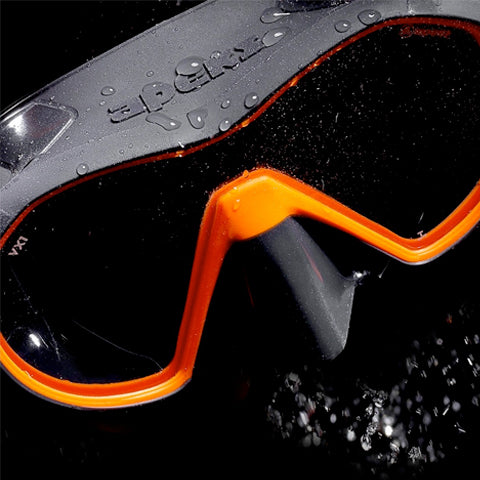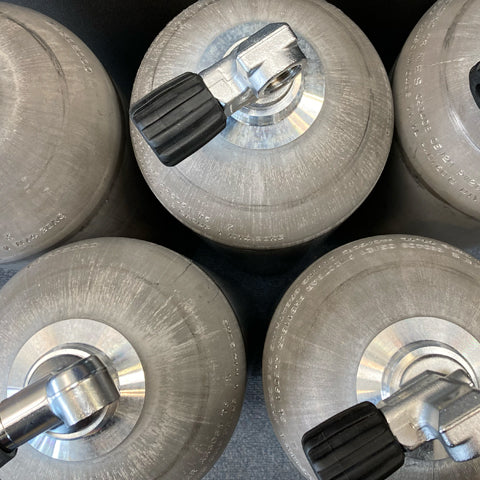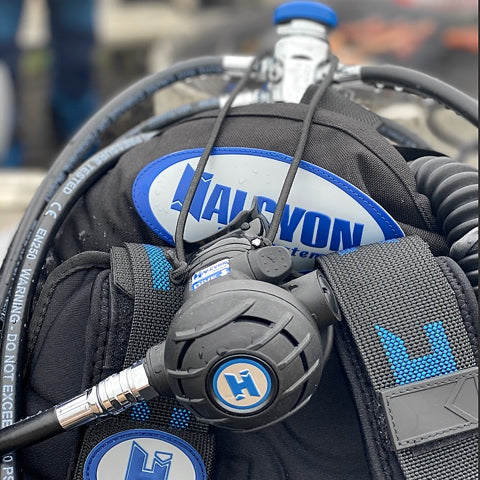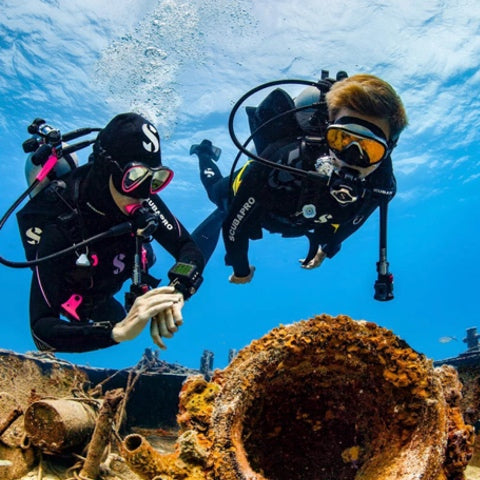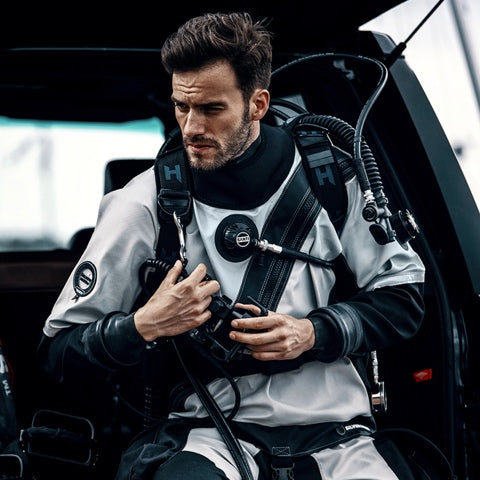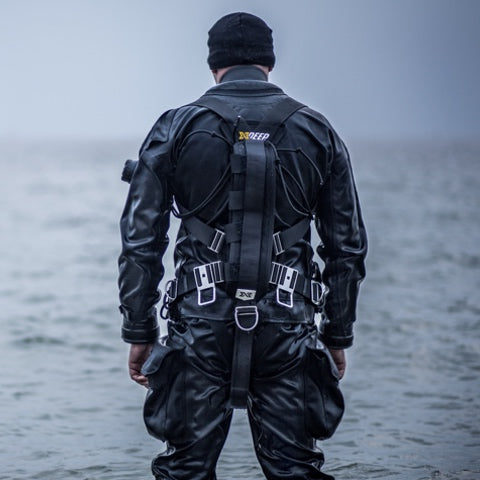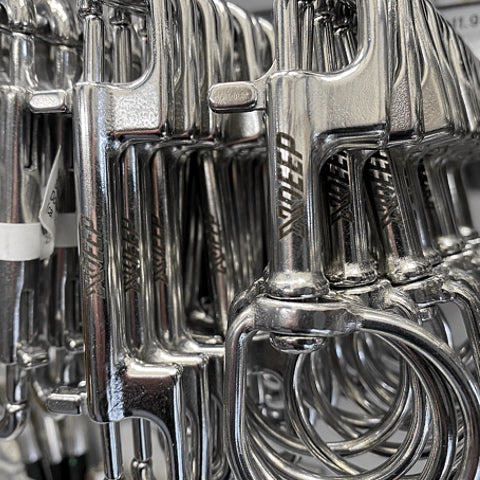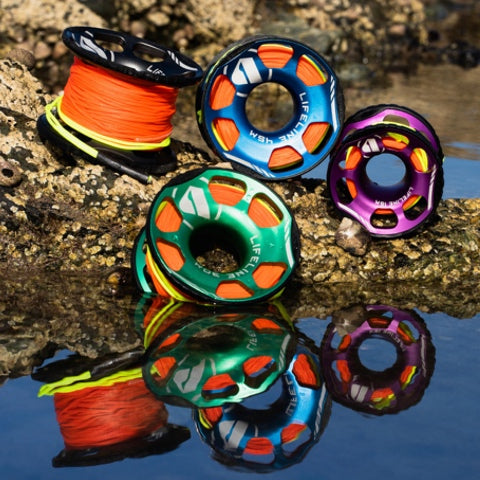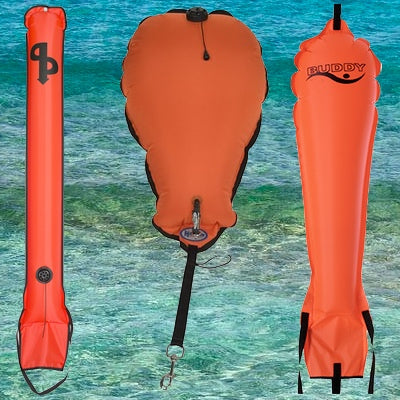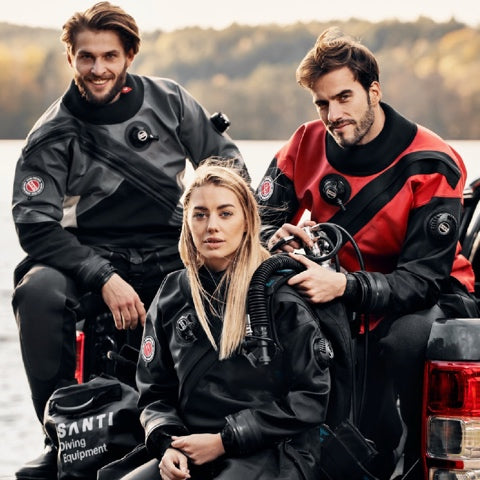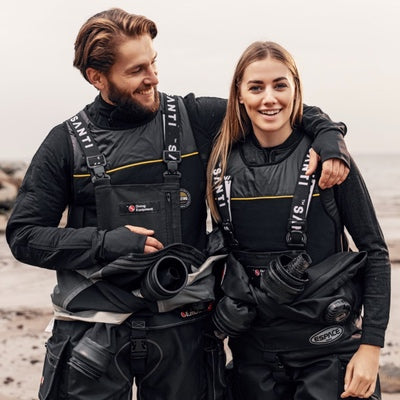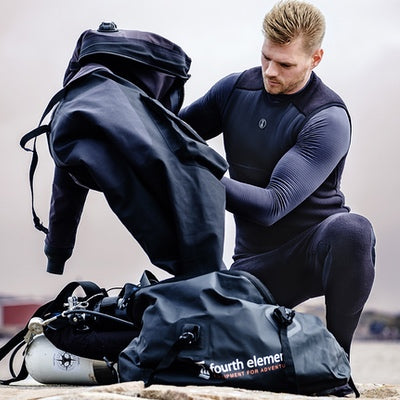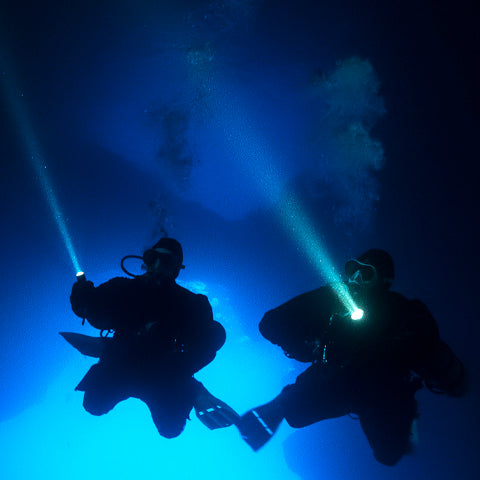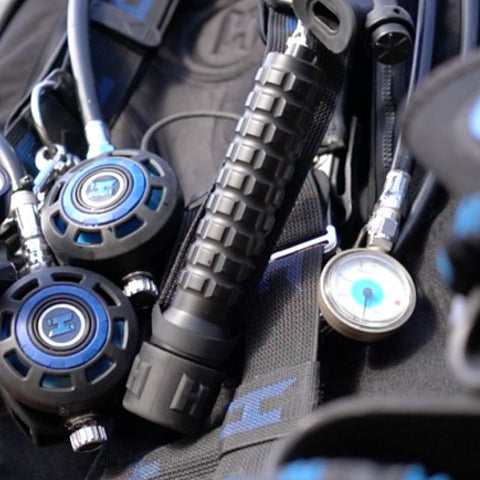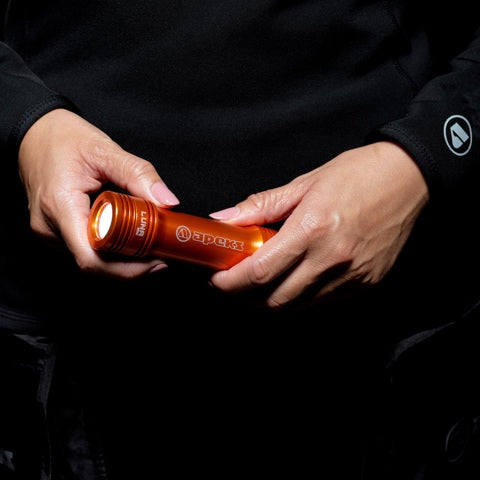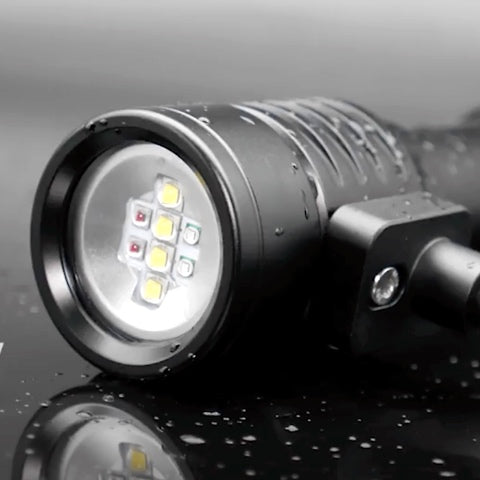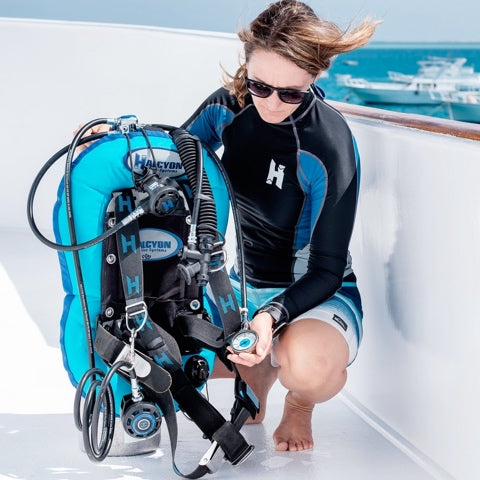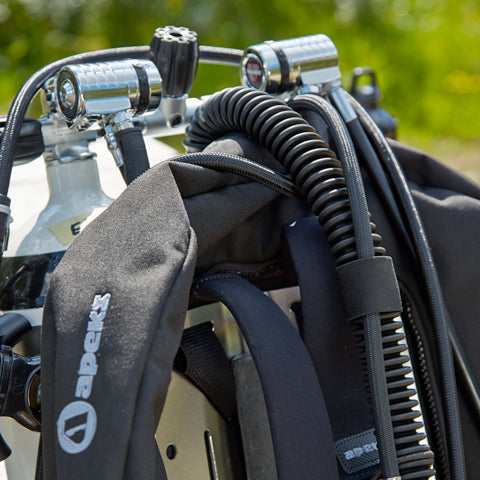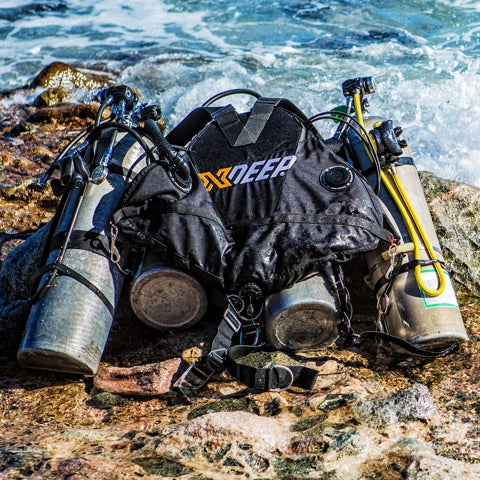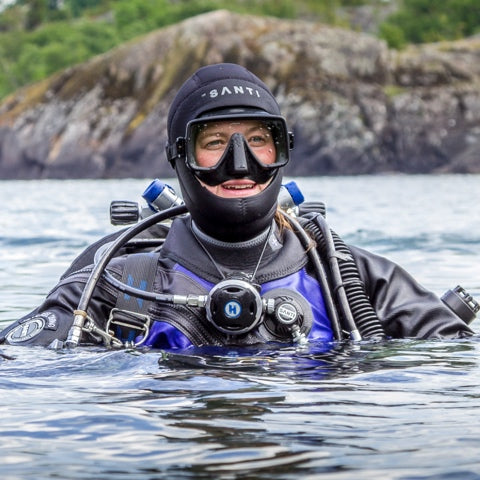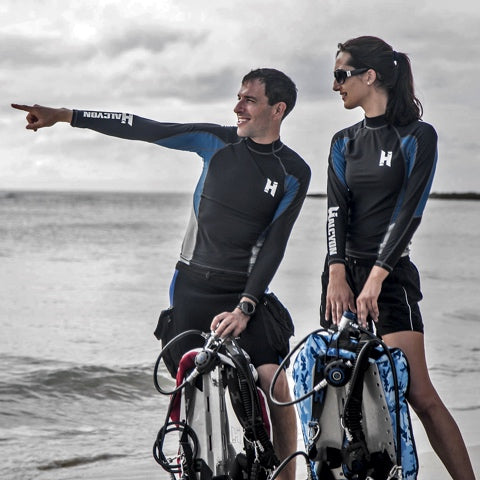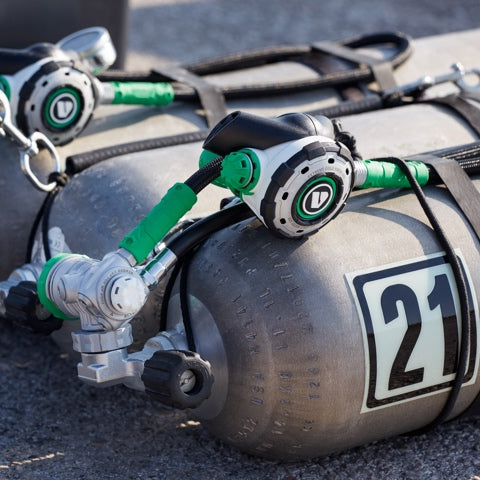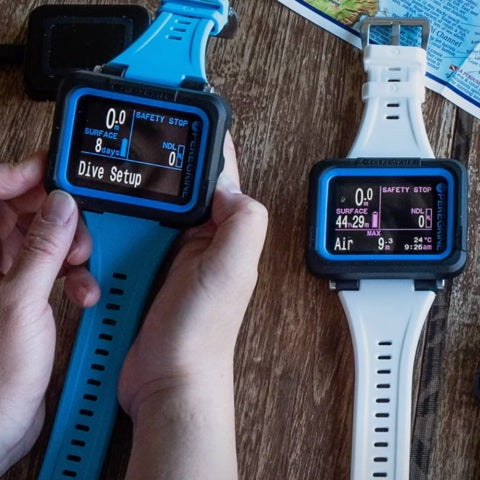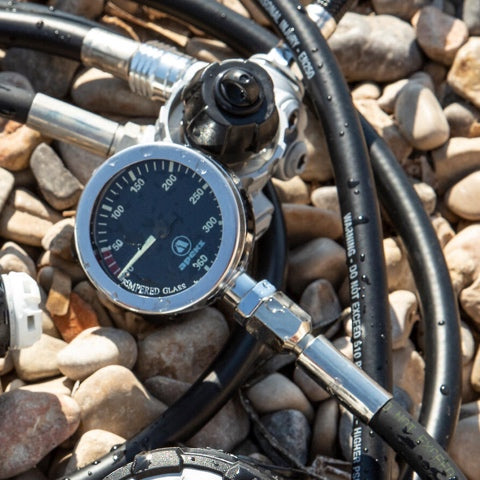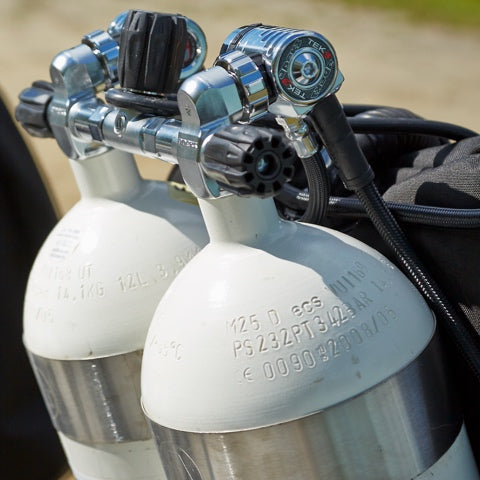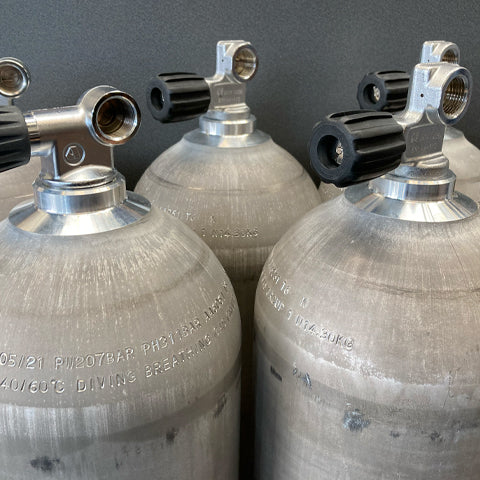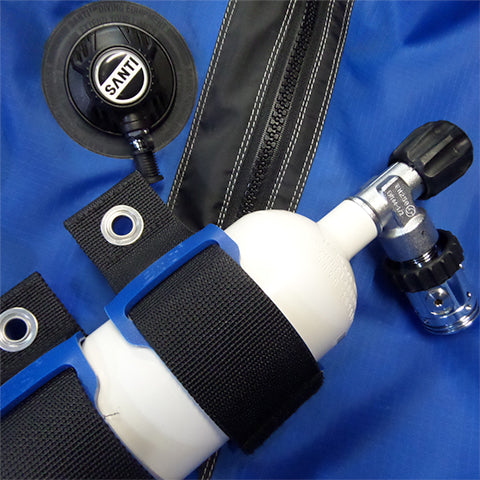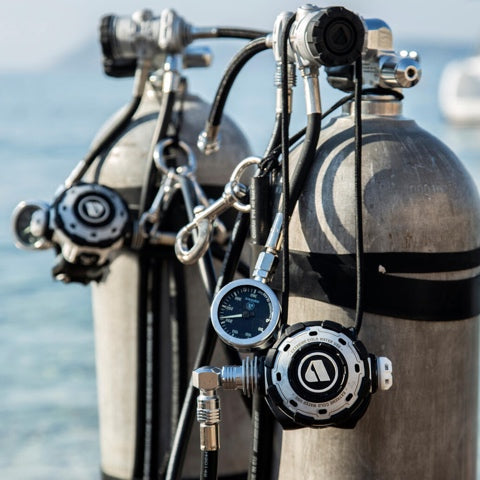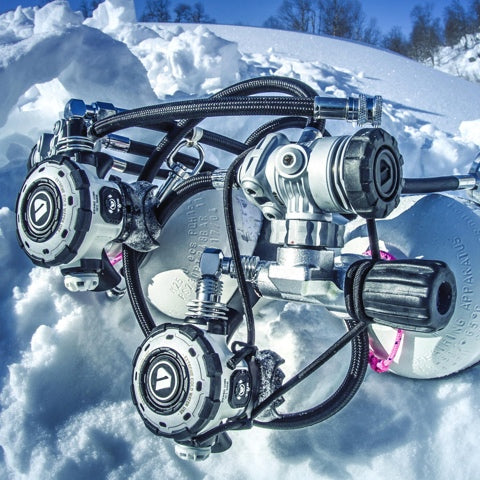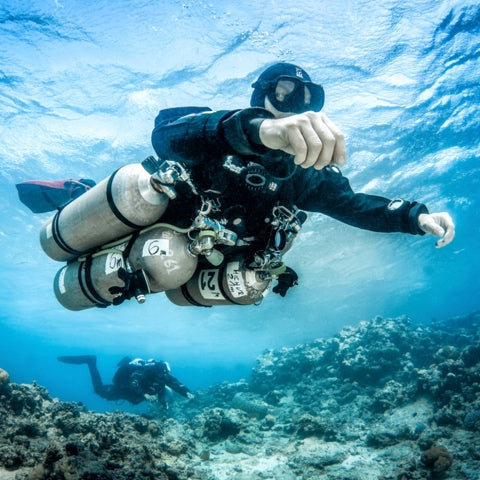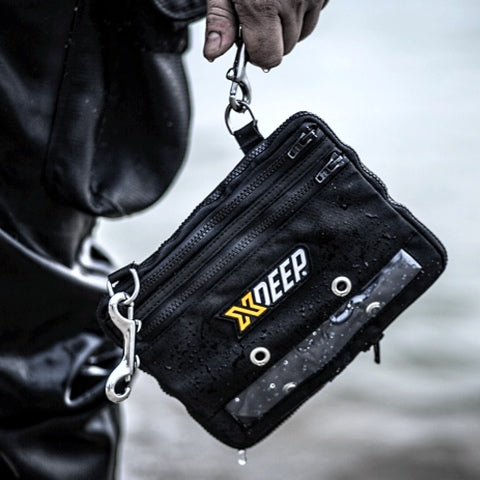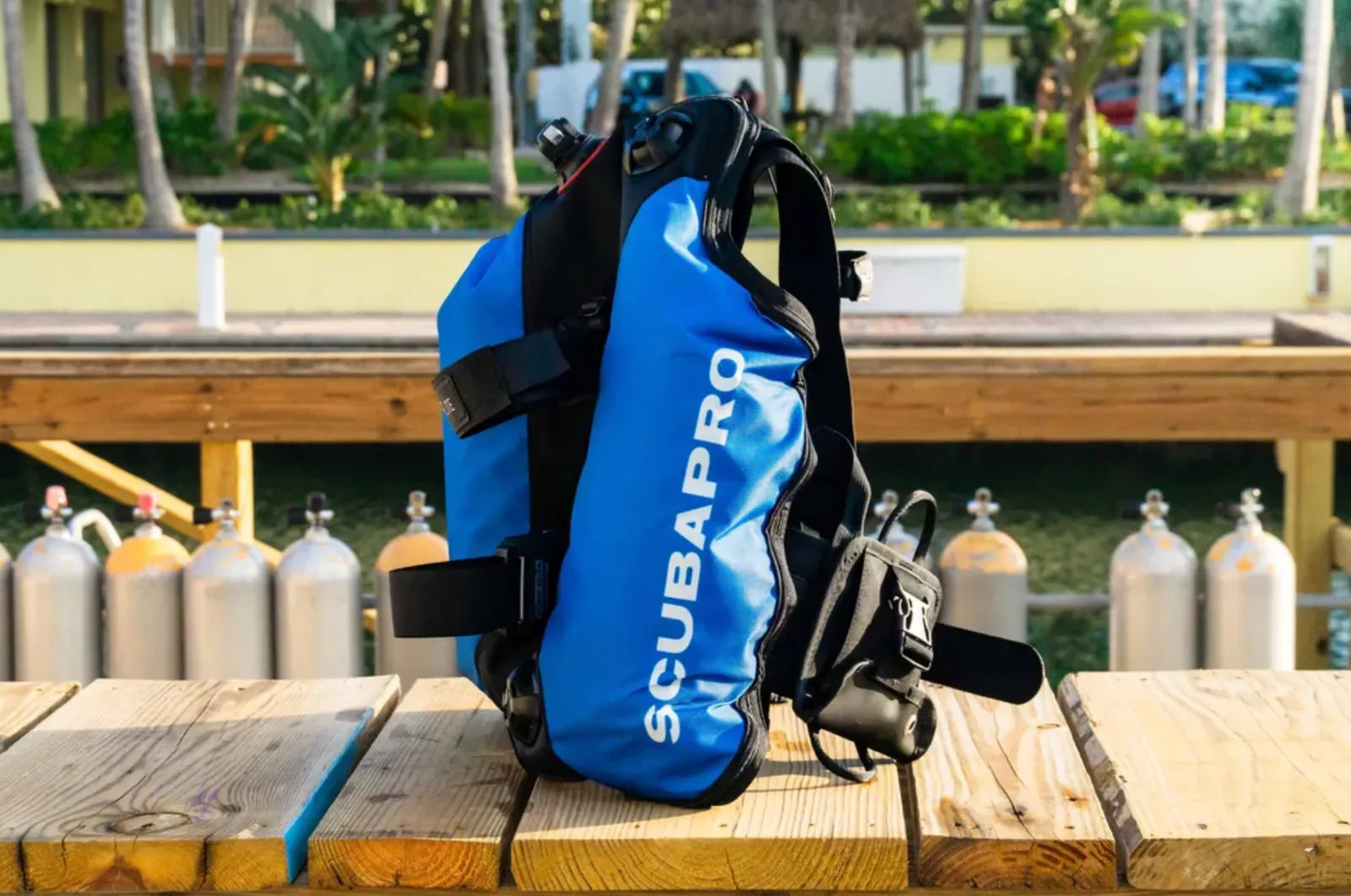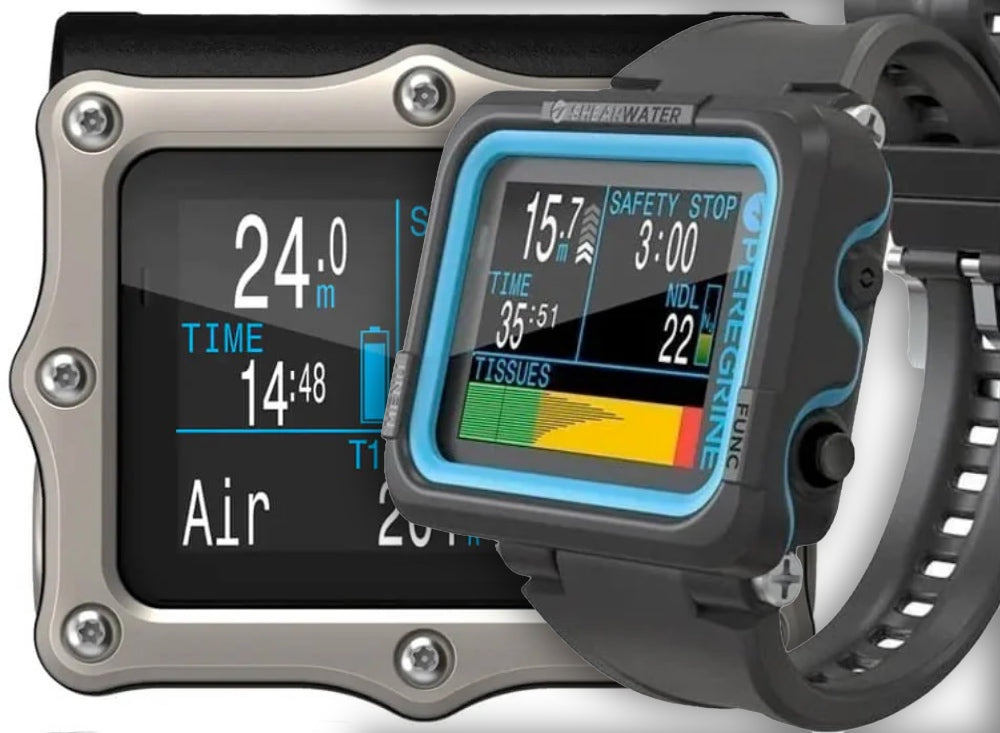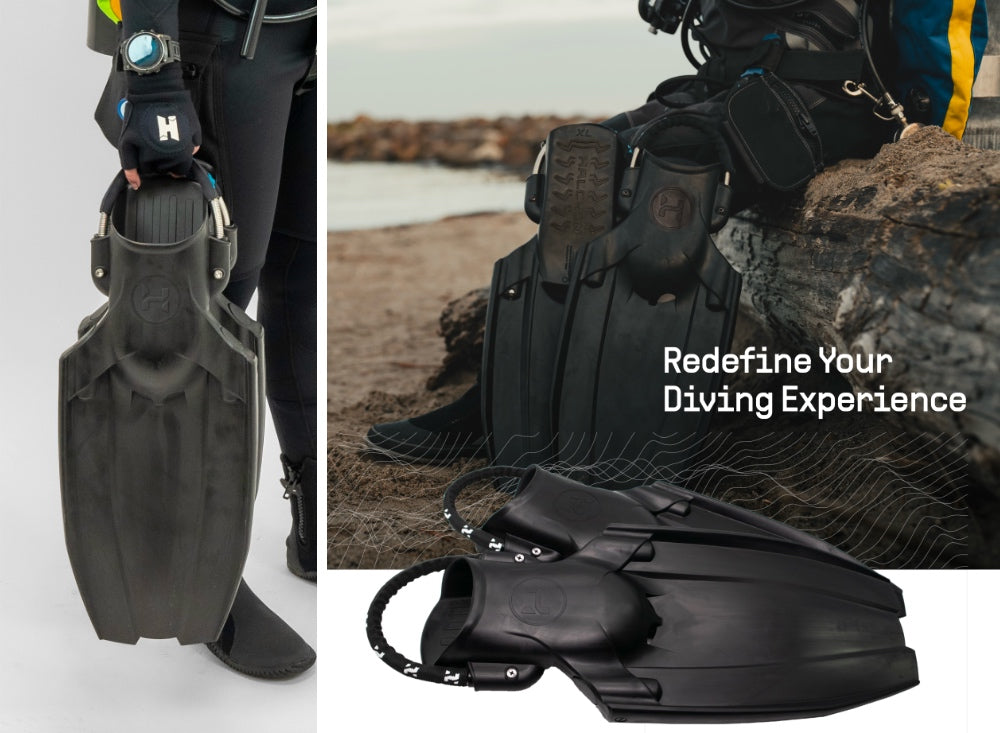Updated on 15 July 2023 to be inclusive of the new 3000-Lumen Ammonite Speleo Mark 2 dive light.
To compare Ammonite dive lights, we must start off with what we mean by “dive light”. In this review of Ammonite torches, we’re primarily covering the three types of Ammonite System dive light heads that are available in 2023: The Ammonite LED NAUTILUS, LED SOLARIS NEXTGEN and the (new) LED SPELEO MK II.
Let's first take a quick peek at what these names are about before listing what's common and what's not between these light heads:
POWER: The most powerful and brightest light head Ammonite produces is the 50W LED Solaris Nextgen which can pump up to 4500 lm on full power compared to the 40W LED Nautilus that can go up to 4000 lm. The previous generation 10W LED Speleo made specifically for cave diving had a max of 1300 lm but the new 2023 LED Speleo MK II now offers 32W of power with 3000 lm light output. In other words, ALL Ammonite light heads available in 2023 have enough power for any type of diving.
FOCUSING: The only focusable dive light in Ammonite's arsenal is the LED Nautilus with a narrow 9º to wide 45º adjustable beam. Both the LED Solaris Nextgen and the LED Speleo MK 2 have fixed 6º beam angles with an amount of spillage around this narrow beam.
BURN TIME: The previous generation of the LED Speleo had a (lower) 10W 1300-Lumen power rating, having been made specifically for cave diving requiring longer burn times. It was not as strong as the other two light heads in punch and penetration for ocean and deep sea diving. But the new 32W 3000-Lumen LED Speleo MK II offers greater power and a stronger beam, making it ideal not just for cave diving but all underwater activities with extended burn time.
MODULAR: All Ammonite light heads are modular and match any Ammonite System battery. You can pick any light head and attach it to an Ammonite accu, selecting the battery size for what burn time you are looking for. This allows you to have more than one light head covering different conditions or different size of batteries.
Check out the chart below where the grey is Boost mode burn time and the red (regular) Operational mode:
When we compare Ammonite dive lights we also look at what type of LED provides the light itself:
OPTICS: As listed later in this comparison of Ammonite System light heads, the type of optics used differs from head to head and reflects also on the corona, halo, and spillage around the narrow beam specified. For instance:
- The LED Solaris Nextgen uses five (5) LED CREE XPL's, five reflectors, that allow for a medium corona.
- The LED Nautilus has one (1) CXB LED CREE but a fresnel lens inside.
- The LED Speleo MK1 has one (1) LED XML2 CREE and one reflector, amounting to a tighter beam with a mild halo effect.
- The LED Speleo MKII has one (1) Luminus SST70 light source and reflector with tight 6º beam and a mild halo effect.
Because all four light heads share exceptional, innovative features, to give a decent review of Ammonite dive lights compared, we first have to point out what specifications are similar or identical between all of them - which makes Ammonite torches so special, before listing all the differences:
Ammonite Modular System - Mix and Match!
The first thing common between elements of Ammonite Systems is that they are all part of Ammonite’s simple and innovative modular system consisting of three primary parts: An external battery (commonly referred to as canister, pack or accu), cabling between the battery and light head, and the light head itself.

What this means is you can mix and match Ammonite light heads and battery packs to suit your needs as all Ammonite umbilical lights, cables, batteries and even heating batteries are equipped with the same chinch-type connector.
You can always change or add to the configuration in the future, upgrade or downgrade the battery pack or purchase a new light head – given everything is so interchangeable. Another advantage is, say, if a cable breaks or wears out, you can even replace it on the dive site with a spare one, saving your dive.
Excellent Build Quality & Compact Design
Another identical feature we want to point out in our "Compare Ammonite dive lights" review is the excellent build quality that makes them extremely durable and reliable even in the most demanding conditions.
The material used for the body of any of the three light heads is the same: Hard anodised marine-grade aluminium casing that can withstand a lot of knocking about.
The rotating magnetic switch knob on each light head is made of lightweight but very tough corrosion-resistant polymer (DELRIN®) and the 6 mm front glass of the lights are made of highly resistant tempered glass.
The light heads are designed to withstand greater pressures at depth and are depth rated from 150 (Nautilus) to 200 (Solaris NG & Speleo) metres. The reliability of Ammonite primary dive lights is further evidenced by the manufacturer's AMMOPOWER 3 years extended warranty.
Operational Features
When Ammonite System dive lights are compared we also see that all three light heads have 3 intensity settings which Ammonite refers to as BOOST, OPERATIONAL and BACKUP mode. Naturally burn times depend on the battery pack (Acuu) used.
Boost mode is 100% power, Operational (regular use) mode is 60% power and backup mode (user changeable and automatic) is 20% power. Ammonite compares burn times based only on Boost and Operational mode.
The light heads have an internal microchip which will signal low battery levels with a strobe flash and automatically switch to 20% "Take Me Home" mode when the battery is drained, providing around an hour of burn time.
We have to note the only way thereafter to get out of 20% backup mode is to fully recharge the battery.
Which Ammonite light head to get & how?
As described above, each light head is of exceptional quality and Ammonite has excelled in the field of manufacturing underwater torches and dive light systems you can rely on.
Our advice is that unless you are upgrading an Ammonite light system or changing your configuration, get your Ammonite light as a kit.
When purchased individually and one by one, Ammonite batteries and light heads do not come with components like chargers, cables etc. which need to be added on.
All three light heads come as a package together with battery, charger, cabling and what you need to get diving whether you choose the Ammonite LED Nautilus Focusable Light Kit, the Ammonite LED Solaris Nextgen Light Kit or the Ammonite LED Speleo MKII Light Kit.
Unless you are specifically cave diving or need seriously extended burn times underwater the choice will be between the Nautilus and Solaris Nextgen and if you're not going to exceed the maximum depth limit of 150 metres for the LED Nautilus, your choice will depend, perhaps not on the power or lumen but on whether you want an adjustable beam focusable dive torch with a Fresnel lens or a 5 LED fixed beam one.
What would of course be great is if you could come and visit our store in person at Underwater Explorers and see and feel the difference between these three torches in person.
But as that's not always possible, what we've done is subtracted the common elements between these light heads and listed the difference to guide your decision (excluding the Speleo MK1 that was previously reviewed:
We Compare Ammonite Dive Lights:
| LED Nautilus | LED Solaris | LED Speleo | |
| Total Power | 40W | 50W | 32W |
| Max Light Output | 4000 lm | 4500 lm | 3000 LM |
| Spot Angle | 9º - 45º | 6º | 6º |
| Optics Type | Focusable | 5 x reflectors | 1 x reflector |
| Lens | Fresnel | 5 x | 1 x |
| Light Source | 1 x CXB LED | 5 × LED XPL | 1 x LUMINUS SST70 |
| Manufacture | CREE® | CREE® | |
| Corona | Medium | Medium | Mild Halo |
| Max Depth | 150 m | 200 m | 200 m |
| Surface Weight | 415 g | 340 g | 262 g |
| U/W Weight | 150 g | 130 g | 100 |
| Max Length | 140 mm | 117 mm | 116 mm |
| Max Diameter | 60 mm | 61 mm | 53 mm |
Still undecided?
Why not take a look at each individual light head kit and get even more detailed information as well as current prices:
As always, if you have any questions, just give us a ring or email us direct or through the site contact form , and we'll do our best to help.
Editor's note: PS... Suppose you're on a tighter budget or don't need the many features of the Ammonite dive lights. In that case, you can also check out our best-selling Orcatorch D630 primary canister torch, which has become one of the most popular dive lights for technical and recreational diving.

